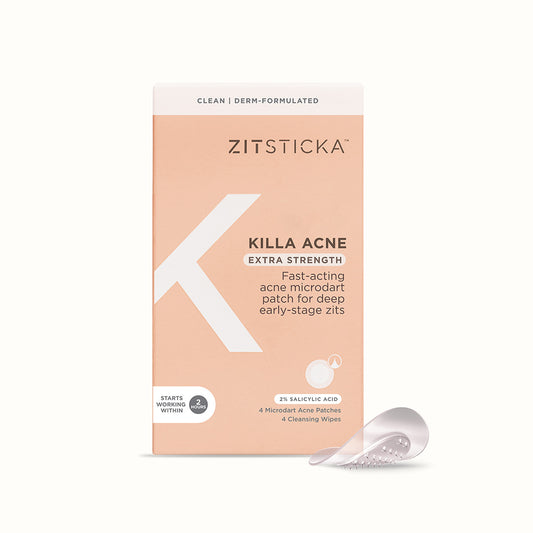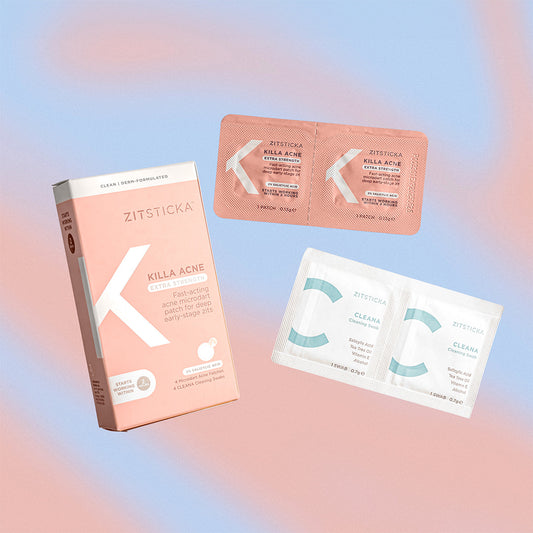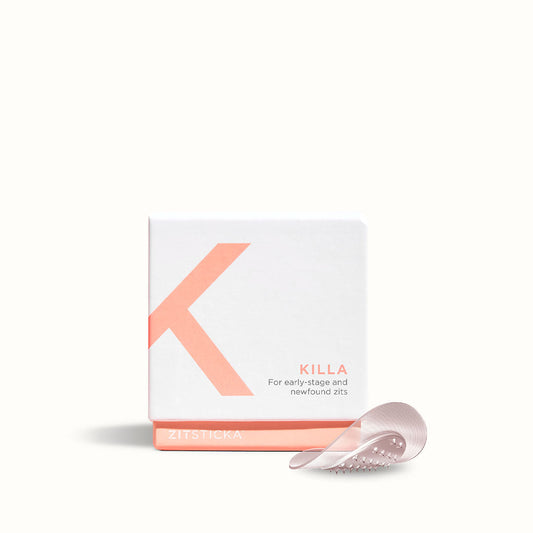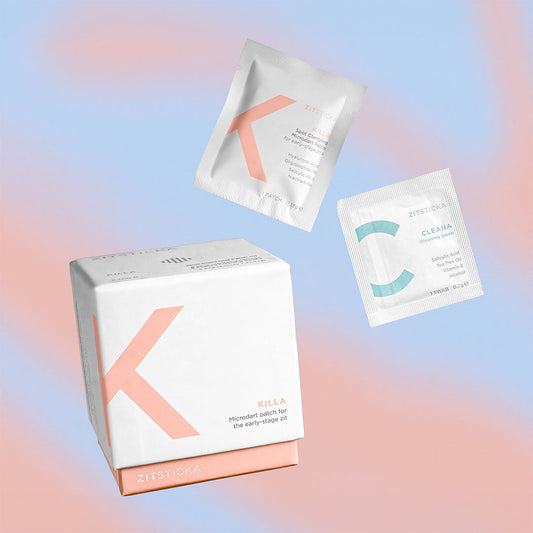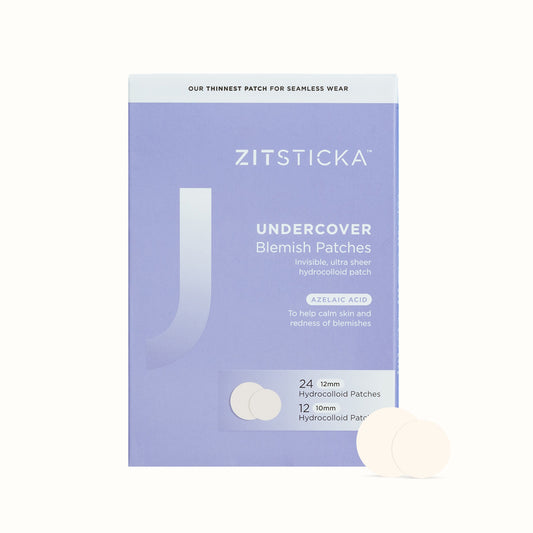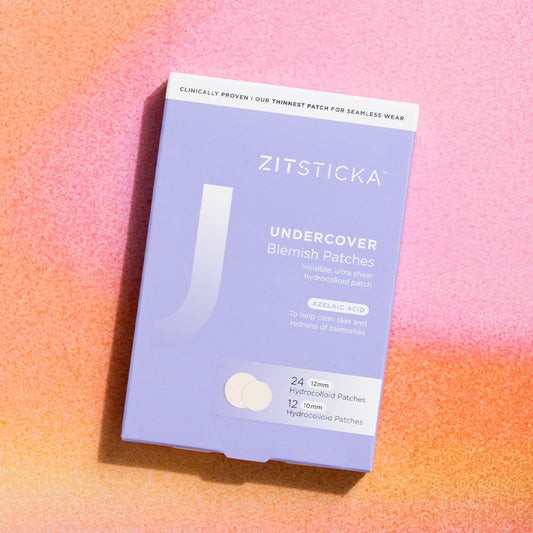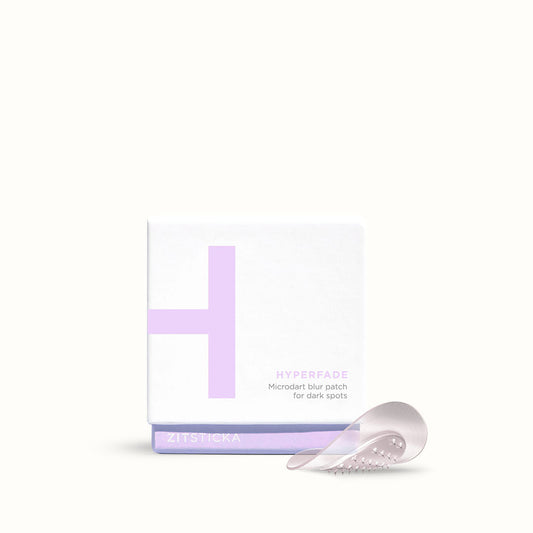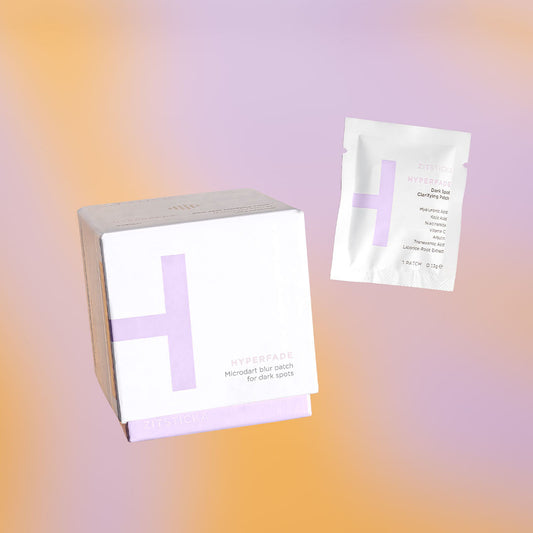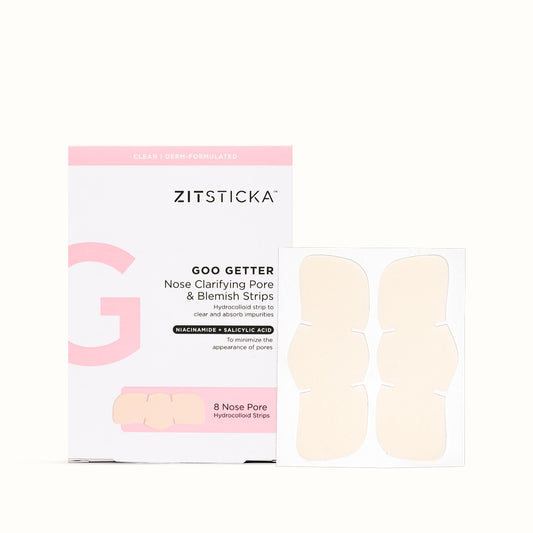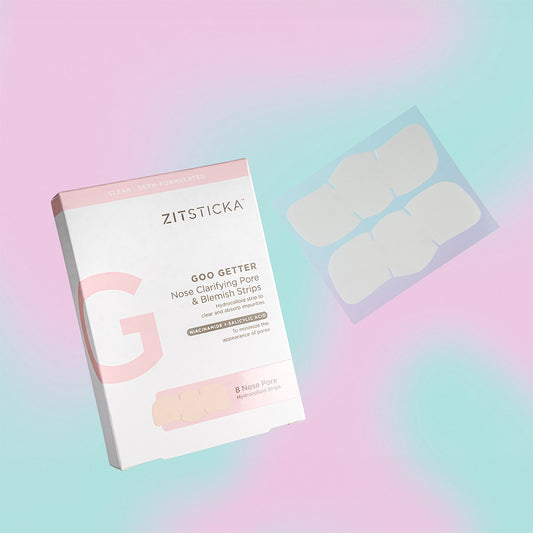Well, hello. You’re here, so perhaps you have some understanding of what KILLA is and does. But it’s kind of in our nature to want to get deep, intricate, specific… so we are gathered here today to experience the long version.
What is KILLA?
KILLA is an acne patch that melts acne quickly and clinically at its source. It’s constructed using a hydrocolloid base (that’s the Sticka part) which is embedded with microdarts, feeding the heart of the problem with targeted ingredients and halting its life cycle.
Does it work on all pimples?
KILLA works best on pimples in the early stage of their life cycle, actually. Deep, upcoming, early-stage acne. Those newfound jerks lurking just beneath the skin. The cystic suckers that ascend in the same spot at the same time each month. If you can smother your underground zit with a KILLA within the first day or two of its existence, you’re doing it right.
How exactly does it work, though?
Magic! No, we’re kidding. Science is the short answer. Here’s the essay-ish answer:
When you place a ZitSticka onto your pimple, you’ll firstly notice a satisfying, tingly feeling—that’s just the teeny, tiny microdarts setting up shop. Very soon, they’ll be defending your skin’s honor. Around two hours after you apply a ZitSticka, the microdarts self-dissolve, serving your pimple a potent elixir of acne fighting ingredients: hyaluronic acid, niacinamide, salicylic acid and oligopeptide-76. Soon after (we unpack the timing particulars down below), both pimple size and inflammation are dramatically reduced.
Around two hours after you apply a ZitSticka, the microdarts self-dissolve, serving your pimple a potent elixir of acne fighting ingredients: hyaluronic acid, niacinamide, salicylic acid and oligopeptide-76. Soon after (we unpack the timing particulars down below), both pimple size and inflammation are dramatically reduced.
Hyaluronic Acid does a lot of the heavy lifting, utility-wise. The substance helps retain over 1,000 times its weight in water, so it’s the conduit for all those other acne-hating ingredients to accurately reach the zit in high volumes. But it’s Oligopeptide-76 that deserves a lot of the credit, a little known antimicrobial ingredient that’s hugely acne averse. However, unlike its acne fighting peers, OG-76 is super gentle and without harsh side-effects—Benzoyl who?! It’s also a peptide (a type of protein fragment) meaning it firms the skin’s appearance.
This whole affair can be summarized using one word, Stickatech, which is our signature technology. Fancy! The more you know, eh?
How does ZitSticka differ to other pimple patches?
Glad you asked! Like we said earlier, ZitSticka’s base is a hydrocolloid sticker, within which microdarts are embedded, within which all the cool tech stuff takes place.
For more traditional zit patches, the mechanism typically starts and ends with a hydrocolloid patch. It’s true that these more one dimensional patches have one cool benefit—they’re able to draw the moisture out of a zit, usually after it’s been pierced. However, they aren't able to work on the hard-to-reach pimples that ZitSticka was constructed for.
And so, we like to think of ZitSticka as being active, not passive.
Microdarts you say. That sounds technical.
You're right! We refer to KILLA as a tech-meets-skincare zit patch. Or, if we're playing cupid, your patch made in heaven. Science can still be cute.
How long should I leave KILLA on?
It all depends on the severity and type of the pimple. Technically, the microdarts dissolve within two hours of application, and continue to work after the patch is removed. The patch, though, serves to cover and protect the site, so leaving it on overnight or until you can feel the site has flattened, is wise. Also: in exceptional cases, a zit can require a second KILLA application. We wrote in greater depth about patching duration here.

